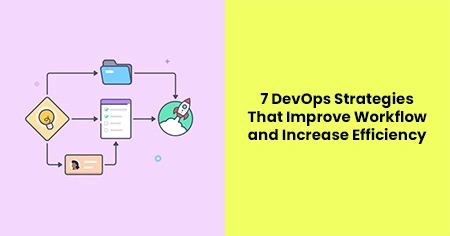From continuous integration to infrastructure automation, these methods help eliminate bottlenecks and promote a culture of agility. In this blog post, we’ll explore seven powerful DevOps strategies that improve workflow and increase efficiency, providing practical insights for teams looking to boost performance and deliver high-quality software faster than ever before.
Implement Continuous Integration
Continuous Integration (CI) is a cornerstone of efficient DevOps workflows, allowing developers to regularly merge code changes into a shared repository where automated tests run to catch issues early. This practice reduces integration problems, shortens feedback loops, and keeps development moving swiftly. For many teams, especially those with limited in-house resources, outsourcing your DevOps needs can streamline implementation and ensure best practices are followed. By relying on experienced external partners, companies can reduce the learning curve and maintain quality without overextending internal teams. CI helps foster collaboration, minimize errors, and deliver more stable, production-ready software at a faster pace.
Adopt Infrastructure as Code
Infrastructure as Code is a powerful DevOps strategy that treats infrastructure configuration the same way as application code. Using tools like Terraform, Ansible, or CloudFormation, teams can define, provision, and manage infrastructure through code templates.
IaC brings consistency, repeatability, and version control to infrastructure management. It eliminates manual setup errors, speeds up environment provisioning, and supports scalable infrastructure changes. By automating infrastructure management, teams spend less time troubleshooting and more time focusing on feature development and innovation, thus improving overall workflow efficiency.
Foster a Collaborative Culture
DevOps is as much about culture as it is about tools. Encouraging a collaborative environment between developers, operations, QA, and security teams breaks down traditional silos that hinder communication and slow workflows.
Regular cross-team meetings, shared goals, and transparency in processes promote trust and mutual understanding. When teams work together from planning to deployment and monitoring, they can quickly identify issues, share knowledge, and implement solutions faster. A culture of collaboration accelerates workflows and leads to higher-quality deliverables.
Utilize Automated Testing at Every Stage
Automated testing is critical to maintaining software quality without slowing down development. Integrating automated tests into the CI/CD pipeline ensures that every code change is validated before progressing.
By automating repetitive testing tasks, teams reduce the risk of human error, gain faster feedback, and detect defects early in the cycle. This proactive approach decreases costly fixes later, improves code reliability, and enables more frequent releases, all of which contribute to a more efficient workflow.
Monitor and Measure Performance Continuously
DevOps is a continuous process, and effective monitoring plays a vital role in maintaining and enhancing system performance. Implementing real-time monitoring tools and key performance metrics allows teams to track application health, infrastructure stability, and user experience across environments. This visibility helps identify anomalies, trends, or failures before they impact end users.
Continuous monitoring also enables rapid detection of issues, faster incident response, and informed, data-driven decisions for optimization. By proactively addressing performance bottlenecks or service degradation, teams can ensure operational stability, reduce downtime, and keep the development pipeline running efficiently, supporting faster delivery and higher-quality software releases.
Leverage Containerization and Orchestration
Containers and orchestration platforms like Docker and Kubernetes revolutionize how applications are built, shipped, and deployed. Containers package software with all its dependencies, ensuring consistent environments across development, testing, and production.
Orchestration automates container deployment, scaling, and management, making it easier to handle complex applications with many microservices. This flexibility and scalability improve resource utilization and reduce environmental inconsistencies, thereby streamlining workflows and increasing operational efficiency.
Prioritize Security with DevSecOps
Integrating security practices directly into the DevOps pipeline is important for modern workflows. Security is no longer an afterthought but a continuous concern addressed through automated security testing, vulnerability scanning, and compliance checks throughout development.
By embedding security early and throughout the process, teams can detect and fix vulnerabilities sooner, reduce risks, and ensure compliance without slowing down delivery. This “shift-left” security approach improves workflow by preventing costly security issues post-deployment and fostering a security-conscious culture.
Implementing DevOps is a transformative journey that demands more than tools, as it requires the right strategies to optimize workflow and boost efficiency. By adopting CI/CD, Infrastructure as Code, fostering collaboration, automating testing, continuously monitoring, leveraging containerization, and prioritizing security, organizations can streamline software delivery, reduce errors, and accelerate innovation.








